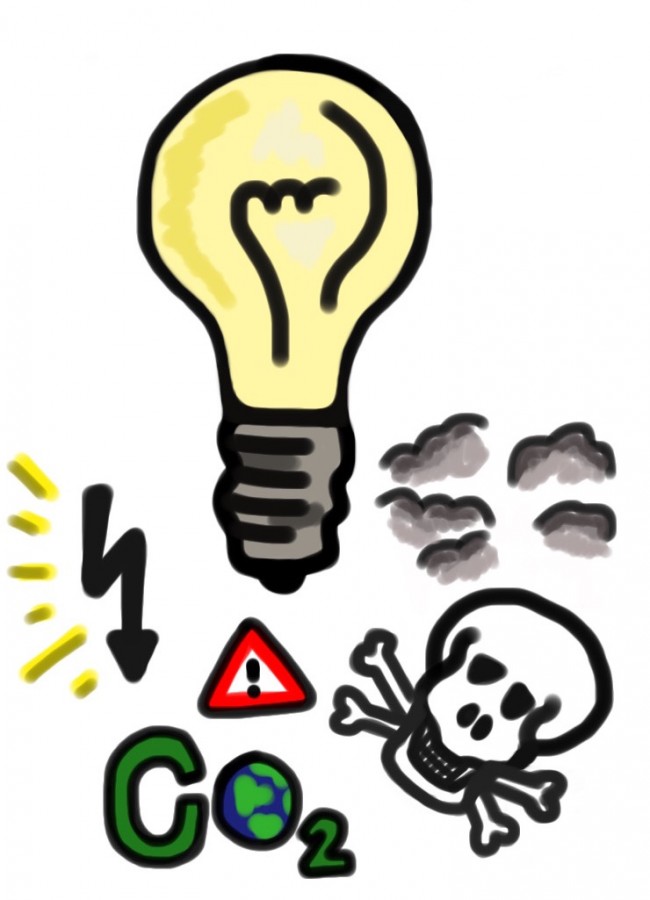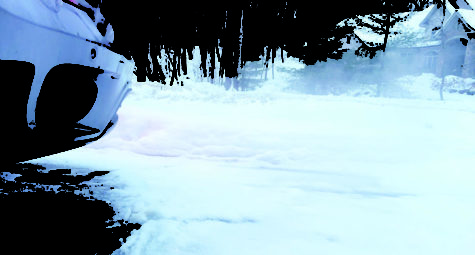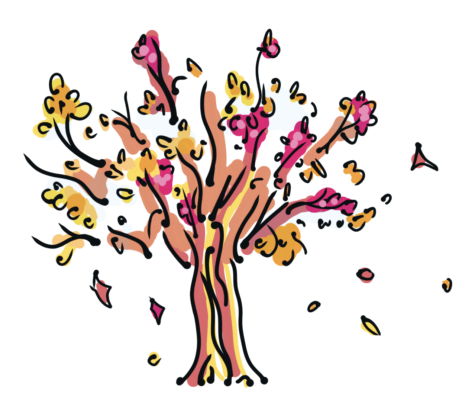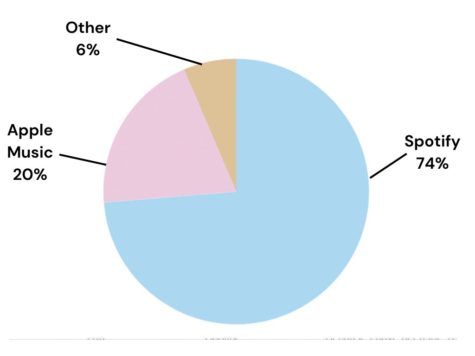“Inconveniences” turn into profound effects
Every small action, or inaction, contributes to our environmental impact
Lights produce many dangerous effects on the environment; they emit about a kilogram of carbon dioxide after just an hour of use, depending on the light bulb.
As students file in and out of the lunchroom, halls, and library, the most overt example of their unawareness about environmental habits is seen. It is here that, as the plates and plastic boxes of food travel throughout the building, students make decisions that shape the school’s environmental impact.
On the surface, the fact that the building has compost bins, recycling bins and compostable cups makes it seem like an adequate amount of time is being put into the environment. But there is still room for improvement. Everything, from transportation to plastic wrappers in the compost, is adding to the large sum of waste that the whole school produces.
A major complaint made by the students is that it is often inconvenient for students to throw things away, or by any means recycle, because of where these bins are placed. Madeleine Weiser ‘16 says, “[students] go for the most obvious or convenient path sometimes.” For the planet, this inconvenience is detrimental by adding more waste than necessary to landfills. Sammy Wagner ‘17 adds, “If you’ve got too much trash in a recycling bin, everything in that recycling bin has to go to the landfill.”
It is true that, like Dan Trockman imagines, “we’ve already reduced probably, by three quarters, the amount of stuff that goes into [the] trash just by recycling. But you can take 65% more of your mass out of your trash by composting.” If we are truly leaving trash in the compost, then what is the point in having it?
Although the school has compost bins, they’re only in a few places: the lunchroom and bathrooms. But what about when students eat in other parts of the school? While the school has tried to encourage students not to take food out of the lunchroom in order to alleviate some of the mess, Weiser still notices that students are highly incompetent when it comes to throwing away their food. She points out that a lack of responsibility reinforces the abundance of left out plates, utensils, and leftovers. “[Students] don’t think it’s their responsibility. But the truth is is that it’s all of our responsibilities to take care of the planet [and] to take care of the school,” Weiser says.
This is applicable to other forms of environmentalism students could practice as well, such as transportation and energy usage. Although simply being aware of actions against the planet is impactful, Wagner thinks that students can do better. “We need to get to a point as a community where we value environmentalism to the point where it’s something that we take pride in. . . rather than something we do just because it’s convenient.”
Another resource wasted in the school is energy, something Trockman stresses in his Environmental Science class as a detriment to our carbon footprint. As a part of his class, he and his students “walk around the school and. . . count all of the light bulbs. We know that one kilowatt [1,000 watts] of electricity over an hour generates about a kilogram of carbon dioxide.” The coal and natural gas that are burned to generate this power creates 60% of the energy we use, and the nuclear energy that fulfills the rest of the power we use generates its own non-greenhouse gas pollution. So, for lights in a room that is left on for an hour, about 0.5 kilograms of carbon dioxide are produced on top of other pollutants. For reference, a kilogram is about two liters, equivalent to two large water bottles.
Yet, as much as the messes and waste left behind by students is part of the whole school’s contribution to landfills and pollution, the school contains several, larger problems that are hidden underneath. Everything from the lights to plastic in the compost adds a little bit more to massive landfills and pollution, something that is simply not as easy to grasp than mindlessly throwing a napkin in a blue bin instead of grey. Trockman says, “really simple things would make a big difference, [like] turning lights off when you leave rooms. Maybe wearing warmer clothes instead of insisting the [building] be kept at 73°.”
Practicing simple habits like turning off the lights are easy ways for students to get the idea of these actions while recognizing that they’re not being as big as science class makes them seem. It is clear, though, that all of these little actions together are damaging to the planet, even if that one plastic bottle seems miniscule.
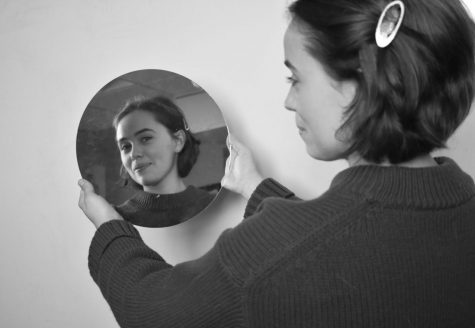
Hi! I'm Zoe, this is my 3rd year doing Spectrum! I am thrilled to be a Managing Editor as well as editing the Sci-Tech and Health page. I love Nancy Drew...
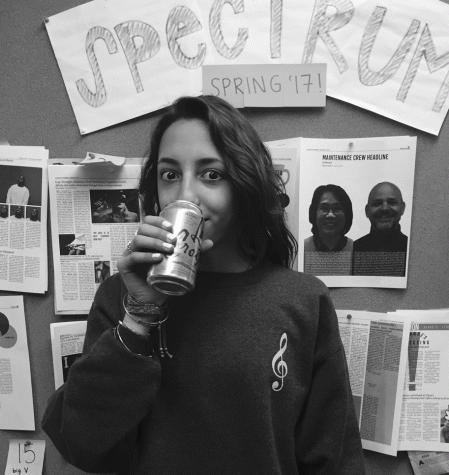
This is my third year writing for Spectrum, and my third semester working as an editor. (I've edited Opinions, Front, and now Sci-Tech!) I'm so excited...

